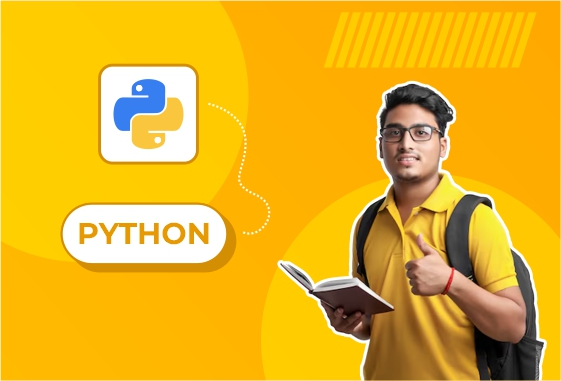
Text Summarization Model
Project Title: Text Summarization Model
Objective:
The goal of this project is to build a machine learning or deep learning model that can automatically generate a concise and coherent summary of a given text document. Text summarization is a crucial natural language processing (NLP) task that can help process large volumes of text data by distilling important information into a shorter form. This can be used in applications like news summarization, report generation, and content aggregation.
Key Components:
Data Collection:
Text Datasets: The project requires a large collection of text data with corresponding summaries for training purposes. Common datasets include:
CNN/Daily Mail dataset (news articles with summaries),
Gigaword (news articles),
DUC (Document Understanding Conference) datasets,
XSum (single-sentence summaries of news articles).
Labeling: In supervised learning approaches, datasets must include both the full text and the corresponding summary for model training.
Data Preprocessing:
Text Cleaning: Clean the text data by removing unnecessary elements such as special characters, stopwords, and irrelevant formatting.
Tokenization: Break the text into tokens (words or sentences). This step is essential for text analysis and model processing.
Sentence Segmentation: Divide the text into sentences to help the model understand how text is structured.
Lowercasing and Lemmatization: Convert all text to lowercase and reduce words to their base forms to standardize the text.
Padding and Truncation: To ensure that all input text sequences have a consistent length, padding (or truncating) is applied to text sequences before feeding them into the model.
Feature Engineering:
Text Vectorization: Convert text into numerical representations that machine learning models can process:
TF-IDF (Term Frequency-Inverse Document Frequency): A method to weigh words based on their importance in a document relative to the entire dataset.
Word Embeddings: Use pre-trained word embeddings such as Word2Vec, GloVe, or FastText to represent words in a continuous vector space, capturing semantic meaning.
Sentence Embeddings: Use models like Sentence-BERT or Universal Sentence Encoder to represent entire sentences as vectors, capturing their meaning more effectively for summarization.
POS (Part-of-Speech) Tagging: Identify the grammatical structure of sentences (nouns, verbs, adjectives, etc.) to help the model understand sentence importance.
Model Selection:
Text summarization can be approached in two primary ways: extractive and abstractive.
Extractive Summarization: This approach selects important sentences or phrases directly from the original document and combines them into a summary.
Algorithms:
TextRank: An unsupervised graph-based algorithm that ranks sentences based on their importance in the text.
Latent Semantic Analysis (LSA): A dimensionality reduction method that extracts important sentences based on the relationships between words.
TF-IDF: Can be used to score sentences based on the frequency of important terms and select the highest-scoring sentences.
Abstractive Summarization: This approach generates new sentences that paraphrase the original text while maintaining its meaning. It involves generating text that may not appear directly in the original document.
Sequence-to-Sequence Models: Use deep learning models like LSTM or GRU with attention mechanisms to convert an input sequence (the document) into a condensed summary.
Transformers: Transformer-based models like BERT and GPT can be fine-tuned for abstractive summarization tasks. Models like T5 (Text-to-Text Transfer Transformer) and BART (Bidirectional and Auto-Regressive Transformers) are particularly effective for this purpose.
Pretrained Models: Models like GPT-3, BART, and T5 are pretrained on large text corpora and can be fine-tuned for specific summarization tasks.
Model Training:
Supervised Learning: For abstractive summarization, models are trained on a dataset of text-summary pairs, where the model learns to generate summaries based on the given text.
Unsupervised Learning: For extractive summarization, models can be trained using unsupervised methods that rely on sentence ranking and feature selection.
Transfer Learning: Fine-tune large, pre-trained models like BERT, GPT-2, or BART on the text summarization task, which can significantly improve performance with limited data.
Model Evaluation:
ROUGE (Recall-Oriented Understudy for Gisting Evaluation): A set of metrics commonly used to evaluate the quality of text summaries. ROUGE compares the overlap of n-grams between the generated summary and reference summaries. Key metrics include:
ROUGE-N (e.g., ROUGE-1, ROUGE-2): Measures the overlap of unigrams or bigrams.
ROUGE-L: Measures the longest common subsequence overlap between the predicted and reference summaries.
BLEU Score: Although typically used in machine translation, the BLEU score can be adapted for evaluating the fluency of generated summaries.
Human Evaluation: In addition to automatic metrics, human evaluators assess the quality of summaries in terms of coherence, relevance, and readability.
Compression Ratio: Measures the length of the generated summary compared to the original document, ensuring the summary is concise without losing key information.
Deployment:
Real-Time Summarization: Once the model is trained, it can be deployed to summarize text in real-time. This could be used in applications such as news aggregation, report generation, or summarizing customer feedback.
API Deployment: The trained model can be hosted as a RESTful API, allowing developers to integrate text summarization capabilities into their applications.
Web and Mobile Integration: Implement the summarization model as part of a larger web or mobile app to provide real-time document summarization for users (e.g., summarizing news articles, product reviews, or research papers).
Ethical Considerations:
Bias and Fairness: Ensure that the model does not generate biased or unfair summaries based on the text it has been trained on. The training data should be diverse and representative of the content it will summarize.
Data Privacy: Be mindful of the privacy of the documents being summarized, especially when dealing with sensitive information. The model should comply with privacy regulations like GDPR or HIPAA if applicable.
Transparency: The process by which the model generates summaries should be transparent, especially if it’s used in decision-making processes where the quality of summaries could impact business or legal decisions.
Outcome:
The outcome of this project is an effective text summarization model that can either generate concise summaries by selecting important sentences (extractive) or create new, paraphrased summaries (abstractive) based on a given document. The model can be deployed to assist with tasks like news aggregation, automated report generation, content curation, and more, saving time and improving efficiency in processing large volumes of text data.





